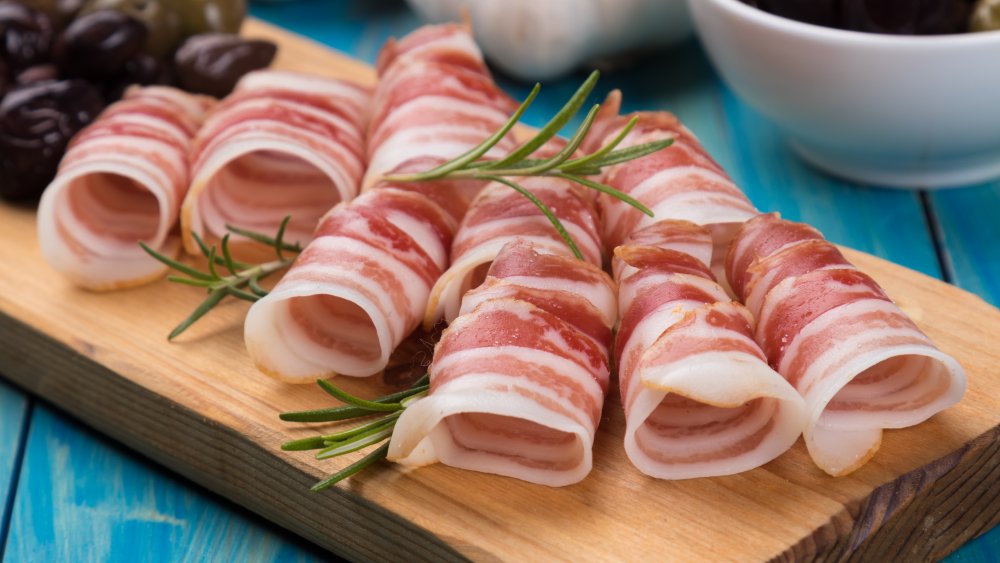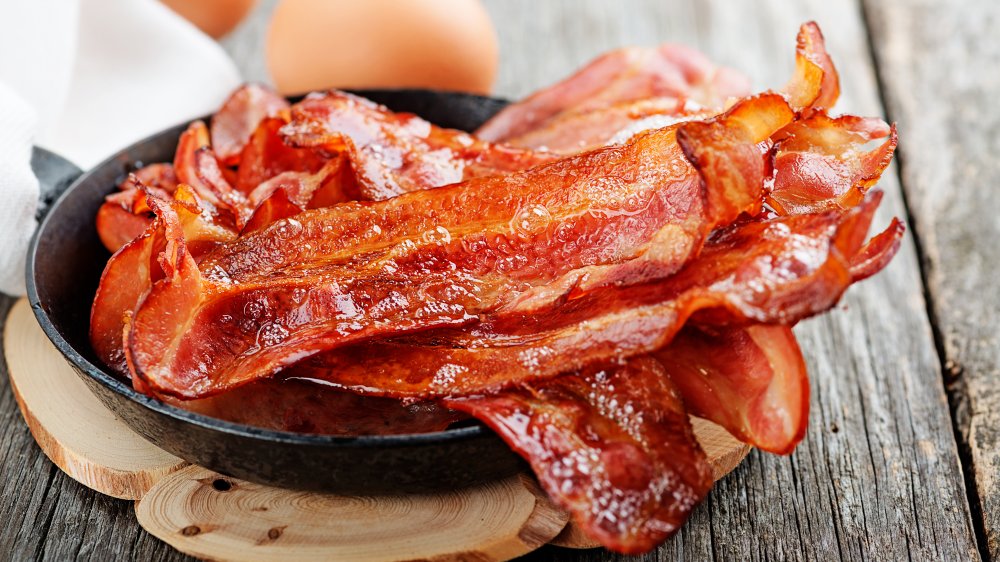The Real Difference Between Pancetta And Bacon
Pancetta and bacon are both meaty delicacies which can be eaten solo, or used in a variety of recipes. But what sets them apart? Let's deal with the similarities first. Pancetta and bacon are both made using pork belly, the fattiest part of the pig (via Fine Cooking). Both types of meat are cured as well (via The Kitchn), which means that moisture has been removed from the meat (via Web Restaurant Store). This inhibits bacteria growth, and therefore prevents spoilage.
However, the way the two meats are cured differs. To make pancetta, the pork belly is heavily seasoned with salt (this is what draws out the moisture and cures the meat), pepper, and spices. The pancetta is then rolled up and sealed again in a casing. To cure bacon, on the other hand, the pork is brined, which essentially means it's marinated in a very salty liquid mixture. Again this draws out the natural moisture in the meat (via The Daring Gourmet).
What happens after curing?
After the curing process, these two commonly-mixed-up pork products diverge again. Once pancetta is cured, that's it! It's finished, and can be used in cooking, or eaten as is. Pancetta is often cubed, and in Italy it's extremely common to find the meat used in pastas, soups, and risottos. However, you can also find pancetta prepared in paper-thin slices, and eaten like prosciutto. Typically, pancetta is not fried like bacon is.
Meanwhile, after bacon is cured, there's another step before you get to the finished product. Bacon is cold smoked, typically over a wood such as hickory or applewood. According to Amazing Ribs, cold smoking keeps the product at a low temperature while smoke is flavoring it, which means that the bacon isn't cooked during the process. As a result, bacon is still technically raw and must be cooked after smoking. So unlike pancetta, you're not going to eat it before it's thoroughly cooked.

